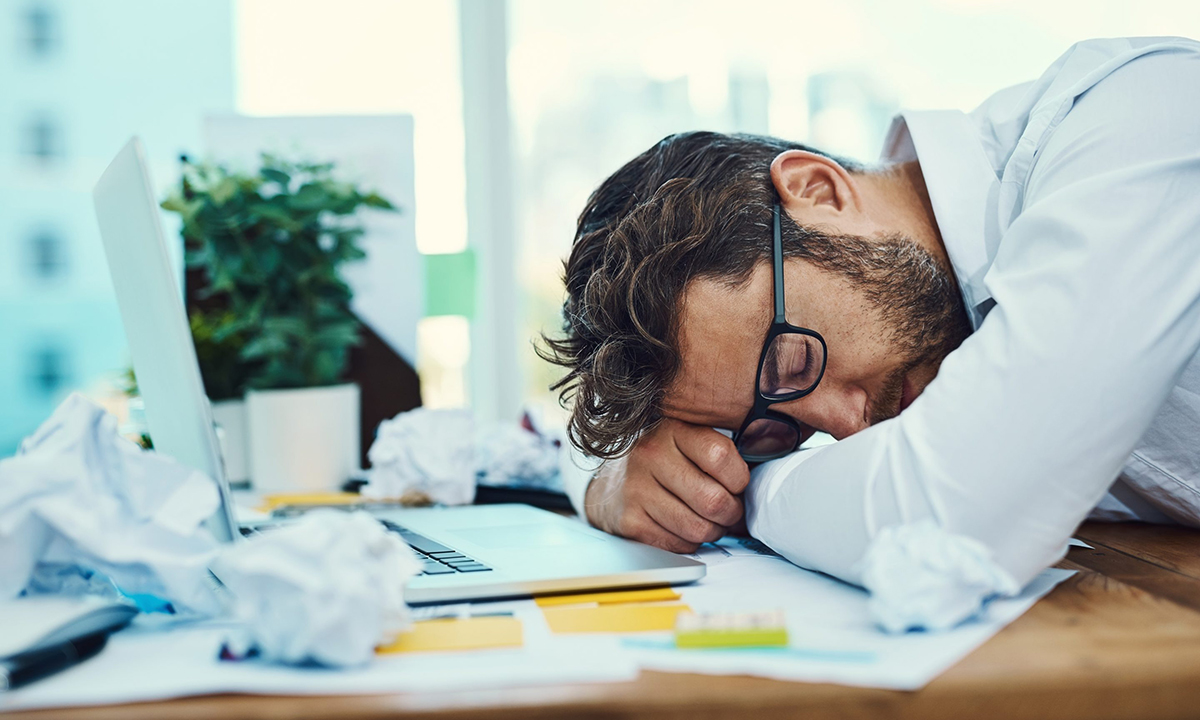怎样午睡最高效?科学告诉你答案

我大三那年是在西班牙留学的。我很快就适应了那里的午休文化,也就是午饭后休息两三个小时。在西班牙语里,午休和午睡是一回事儿,午休是工作日的分水岭,基本上所有企业在下午2点到5点之间都是关门的。
一开始的时候,西班牙的午休文化让我这个“内卷”惯了的工作狂有些不适应。不过它很快就成为了我留学生活中的一部分。只是回国之后,我很快又把午休的习惯抛到一边了。
过了将近20年后,午休的习惯又在美国流行了起来,这还要感谢The Nap Ministry的创始人特里西娅·赫西,她坚持不懈地宣传午休的好处,而且科学研究也表明午睡有助于改善人的整体健康水平。最近的一项研究发现,午睡能够延缓大脑随着年龄增长而萎缩的速度,从而促进大脑健康。
午睡的好处还包括:
提高记忆力
提高警觉性
提高逻辑思维能力
降低疲劳
当然,什么事情都是有利有弊,对于午睡也是一样。下面就来说说上班族们正确的午睡打开方式。
一天什么时候午睡最合适
在你午睡之前,你应该设置一个30分钟的闹钟,因为过长的午睡时间会影响你夜间的睡眠质量,让你第二天感觉更加疲劳,甚至有可能造成恶性循环。
睡眠咨询服务公司Sleepless in NOLA的创始人尼龙·维亚斯博士建议:“每天午睡时间应该限制在30分钟以内,而且应该早于夜间上床时间至少7个半小时到9个小时,以避免扰乱夜间睡眠和昼夜节律。如果你打算在白天午睡,最好的时间就是在喝完咖啡或者吃完午饭以后。”
如果每天午睡超过60分钟,则会增加患2型糖尿病或代谢综合症的风险,而代谢问题则有可能会增加你患心脏病、糖尿病、中风和其他健康问题的风险。
午睡的理想环境
午睡的理想环境与夜间睡眠相似,专家建议尽量选择一个黑暗和安静的环境,并且尽可能减少干扰。当然,如果你不是居家办公,或者你的公司没有专门的午休场所,要想创造这样的环境可能并不容易。
伦敦大学学院(University College London)的维多利亚·加菲尔德博士在关于午休与脑健康的一项研究中指出:“我们的研究结果表明,对于部分人来说,午休有助于在年龄增长的过程中保持大脑健康。我希望类似研究有助于消除人们对午休的偏见。”(财富中文网)
译者:朴成奎
我大三那年是在西班牙留学的。我很快就适应了那里的午休文化,也就是午饭后休息两三个小时。在西班牙语里,午休和午睡是一回事儿,午休是工作日的分水岭,基本上所有企业在下午2点到5点之间都是关门的。
一开始的时候,西班牙的午休文化让我这个“内卷”惯了的工作狂有些不适应。不过它很快就成为了我留学生活中的一部分。只是回国之后,我很快又把午休的习惯抛到一边了。
过了将近20年后,午休的习惯又在美国流行了起来,这还要感谢The Nap Ministry的创始人特里西娅·赫西,她坚持不懈地宣传午休的好处,而且科学研究也表明午睡有助于改善人的整体健康水平。最近的一项研究发现,午睡能够延缓大脑随着年龄增长而萎缩的速度,从而促进大脑健康。
午睡的好处还包括:
提高记忆力
提高警觉性
提高逻辑思维能力
降低疲劳
当然,什么事情都是有利有弊,对于午睡也是一样。下面就来说说上班族们正确的午睡打开方式。
一天什么时候午睡最合适
在你午睡之前,你应该设置一个30分钟的闹钟,因为过长的午睡时间会影响你夜间的睡眠质量,让你第二天感觉更加疲劳,甚至有可能造成恶性循环。
睡眠咨询服务公司Sleepless in NOLA的创始人尼龙·维亚斯博士建议:“每天午睡时间应该限制在30分钟以内,而且应该早于夜间上床时间至少7个半小时到9个小时,以避免扰乱夜间睡眠和昼夜节律。如果你打算在白天午睡,最好的时间就是在喝完咖啡或者吃完午饭以后。”
如果每天午睡超过60分钟,则会增加患2型糖尿病或代谢综合症的风险,而代谢问题则有可能会增加你患心脏病、糖尿病、中风和其他健康问题的风险。
午睡的理想环境
午睡的理想环境与夜间睡眠相似,专家建议尽量选择一个黑暗和安静的环境,并且尽可能减少干扰。当然,如果你不是居家办公,或者你的公司没有专门的午休场所,要想创造这样的环境可能并不容易。
伦敦大学学院(University College London)的维多利亚·加菲尔德博士在关于午休与脑健康的一项研究中指出:“我们的研究结果表明,对于部分人来说,午休有助于在年龄增长的过程中保持大脑健康。我希望类似研究有助于消除人们对午休的偏见。”(财富中文网)
译者:朴成奎
When I studied abroad in Spain my junior year of college, I quickly became adept at the siesta—a two- to three-hour midday break, usually following lunch. Directly translated, siesta is Spanish for “nap,” but the tradition also involves a workday pause, with businesses shutting down between 2 p.m. and 5 p.m.
At first, the siesta caught my American workaholic tendencies off guard. But the cultural norm quickly grew to become a cherished part of my time abroad, although the practice fell by the wayside once I returned stateside.
Fast forward nearly 20 years later and naps are having a moment on this side of the Atlantic thanks in large part to Tricia Hersey of The Nap Ministry, who preaches and practices the examines the liberating power of naps, and science that proves napping can improve overall health. In fact, a recent study found that power napping can promote better brain health by slowing the rate at which brains shrink as we age.
Other benefits of daytime napping include:
Improved memory
Increased alertness
Better logical reasoning abilities
Reduced fatigue
But as with most practices, there are pros and cons to daytime napping. Here’s how to make sure you incorporate naps into your workday routine effectively.
The best time of day to take a nap
Before you doze off, you’ll want to ensure you set an alarm for 30 minutes out as longer naps interfere with your ability to sleep well at night, causing you to feel more tired and perpetuating a cycle of poor sleep.
“Taking a nap can be helpful as long as it is limited to 30 minutes per day and completed at least seven and a half to nine hours before bedtime to avoid disrupting overnight sleep and circadian rhythms,” explains Dr. Nilong Vyas, founder and owner of Sleepless in NOLA, a sleep consulting service, and medical review expert at SleepFoundation.org. “If you decide to nap during the day, it’s best to do so earlier in the morning after drinking coffee or lunch.”
Daily naps lasting longer than 60 minutes have been linked to an increased risk of type 2 diabetes or metabolic syndrome, a group of conditions that can raise your risk of heart diseases, diabetes, stroke and other health concerns.
The ideal environment for a nap
Prime conditions for napping are similar to nighttime sleep, with experts recommending a dark and quiet space with minimal interruptions and distractions. However, creating such a space could prove difficult if you aren’t working from home or don’t work for a company that has incorporated dedicated napping facilities into its workspace.
“Our findings suggest that, for some people, short daytime naps may be a part of the puzzle that could help preserve the health of the brain as we get older,” Dr. Victoria Garfield of University College London wrote in her study about naps and brain health. “I hope studies such as this one showing the health benefits of short naps can help to reduce any stigma that still exists around daytime napping.”













